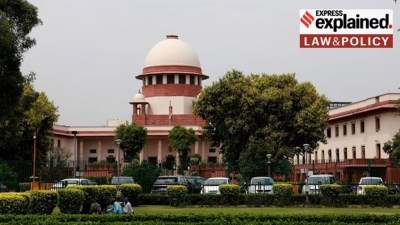Manoj Nambiar: ‘Banks provided moratorium to 50% of MFIs, expect normalcy by Dec’
Lockdown has been challenging for NBFC-MFIs. As per the regulatory mandate, NBFC-MFIs were to offer moratorium to all segments of micro borrowers.
 Manoj Nambiar, chairperson, MFIN
Manoj Nambiar, chairperson, MFIN
MANOJ NAMBIAR, Chairperson, Microfinance Institutions Network (MFIN), the self-regulatory organisation of microfinance firms, spoke to GEORGE MATHEW on a host of issues being faced by the MFI sector which has a loan portfolio of Rs 2.2 lakh crore and a client base of 60 million. Edited excerpts:
What is the impact of the lockdown on MFIs? Have collections fallen?
Lockdown has been challenging for NBFC-MFIs. As per the regulatory mandate, NBFC-MFIs were to offer moratorium to all segments of micro borrowers. On the other hand, they were in constant dialogue with their lenders seeking back-to-back moratorium. In the initial phase of the lockdown, there was no economic activity. There was a halt in the operations — disbursement and recovery — as most of this is dependent on field visits and centre meetings owing to the Joint Liability Group (JLG) model that microfinance works on. However, in the later stage of the lockdown, MFIs which were in orange and green zones started their operations post relaxation offered by the government. And now, over 90 per cent of the MFIs and branches are operational. The recoveries are picking up despite the moratorium as most micro borrowers are choosing to repay so that they can avoid moratorium interest and get additional credit when they require.
Which segment of MFI borrowers is hit maximum — rural or SHGs or farmers or retail borrowers?
Most of the MFI borrowers fall in the JLG model of business. Urban borrowers have been the worst hit with the stringent lockdown, while semi-urban and rural borrowers have fared better with lesser disruption. Also, the agri connection has led to cash flows due to the harvest season just gone by.
Are banks giving moratorium to MFIs? They were reluctant…
As our most important lenders, banks play a very critical role in the delivery of microfinance services. After the initial confusion on whether intermediaries could get a moratorium from banks which got clarified by the RBI Governor later, most banks re-approached their board to offer moratorium on a case to case basis. Overall, in about 50 per cent of cases, moratorium was extended. Now with the extension of moratorium till end-August, it is even more important for banks to support all MFIs. We also look up to financial institutions like SIDBI, MUDRA and Nabard for the same.
As banks have not fully given moratorium to MFIs, do you expect a spurt in NPAs post August?
Micro borrowers have already started their repayment process as activities have started opening up. For most, the area of their activity has been in orange and green zones and with relaxation offered they were able to resume their economic income generating activity much earlier. The first moratorium period ended on May 31, and even during that period, there has been intent and propensity to repay because they resumed their income generating activity in small proportion. Now, the second moratorium is until August 31 and is expected to be administered in a compassionate way, especially in metros and nearby areas. If they are not in a position to repay, then MFIs would offer them the facility to extend moratorium till August 31. Some spike in delinquency is to be expected as September would be the first month of normal operations after almost 5 months.
When do you think normalcy will return in the MFI segment?
The extended moratorium will end in August 2020. We hope and expect near normalcy to return by the end of December. There will be a fresh demand for micro loans. If that were to happen along with existing borrowers too, getting back into the saddle, we expect normalcy to be earlier than expected.
There’s a perception that MFI loans are expensive. How can we make it cheaper for small customers considering the fact that RBI slashed rates steeply?
NBFC-MFI’s charge anything from Rs 10 to 12 as interest per Rs 100 borrowed for a year tenor. There is a certain cost which comes associated with this doorstep service towards the cause of achieving financial inclusion … that is in making credit available to every needy individual. We must keep in mind that these loans are collateral free. The second aspect is NBFC-MFIs are completely regulated and hence as per mandate they cannot levy interest more than what is mandated — i.e. cost of funds plus 10 per cent is what NBFC-MFIs (more than Rs 100 crore size) can levy and not more. Now, with digitisation coming in and overall cost of funds going down, the interest levied to micro borrowers would come down over next few months/weeks if the transmission from banks were to get extended to us. The benefits of MFIs getting a more reasonable loan would be automatically passed down to our customers.


- 01
- 02
- 03
- 04
- 05





























